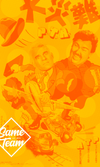Collaboration gets romanticized. We picture it as creative energy bouncing around a whiteboard or easy rapport over coffee. When it’s missing, we chase the vibe—add another Slack channel, plan a team offsite, install a new workflow tool. But the truth is, real collaboration doesn’t run on vibes. It runs on structure.
And when that structure isn’t there, things grind.
It starts subtly. People jump into projects without clarity on what they own. Work gets duplicated—or worse, missed. Decisions fall flat. Accountability becomes a team sport with no referee. Everyone’s moving fast, but progress stalls. Morale dips. Tensions rise. And you can’t quite put your finger on why it feels so heavy.
It’s not a motivation issue. It’s a systems problem.
At Same Team, we see this constantly—especially in remote and hybrid teams. Leaders want collaboration. Teams are hungry for it. But without a shared framework, good intent gets buried under friction, confusion, and rework.
That’s why collaboration is one of the three angles in the Teamangle system. It’s not a soft skill—it’s a structural commitment. And it has to be designed that way.
I learned this the hard way leading teams inside USAA. Our new Chief Design Office kept colliding with the existing Digital division. Same company, same org, same end goals—but the collaboration was chaos. Misaligned processes. Vague expectations. Repeated friction.
So we brought both teams into a room. We mapped everything: who did what, where overlap occurred, what got lost in handoffs. We co-created a shared framework. Roles got defined. Expectations aligned. Collaboration points became visible and intentional.
The result? Time-to-market dropped by 65%. Not because we added headcount or fancy tech. Because we designed a system that worked.
That’s what structured collaboration makes possible: speed, trust, and flow.
It also keeps teams from slipping into the kind of dysfunction that shows up in research again and again. Harvard Business Review found that 75% of cross-functional teams are dysfunctional—not because people don’t care, but because collaboration is left to chance. If you’re not building the structure, you’re winging it. And no team can wing it forever.
So what does a real collaboration system include? Five commitments:
- Clear roles and responsibilities. Everyone knows their lane—and how it intersects with others.
- Shared language. No more decoding terms or guessing what “done” means.
- Decision frameworks. People know how decisions are made and who owns them.
- Aligned expectations. Timelines, feedback cycles, communication cadences—all clear.
- Inclusive practices. The right people are in the room, at the right time, for the right reasons.
These aren’t add-ons. They’re the infrastructure that lets great teams move together, not just beside each other.
And when you don’t have them? Collaboration becomes a chaotic swirl of Slack messages, duplicated tasks, and misfired assumptions. It’s not a partnership. It’s parallel play under pressure.
If your team feels like it’s busy but not really moving, it’s probably not a culture issue. It’s a collaboration system that needs rebuilding.
That’s what Teamangle was built to help you see—and solve.
The Diagnostic maps where your team’s collaboration habits are helping and where they’re hurting. The Playbook gives you practical tools to reset roles, clarify decisions, and co-create structures that actually stick.
Because collaboration isn’t magic. It’s method. And it can be built.
TL;DR:Collaboration doesn’t thrive on good vibes or spontaneous chemistry. It thrives on structure—clear roles, aligned expectations, and shared frameworks. When that structure’s missing, even the most talented teams get stuck. That’s why collaboration is a core angle in the Teamangle system. It turns ambiguity into action and chaos into momentum. If your team feels like it’s working hard but spinning its wheels, it’s time to fix the system—not the people.
Master Tag: CollaborationSupporting Tags: Role Clarity, Shared Language, Defined Processes and Success






